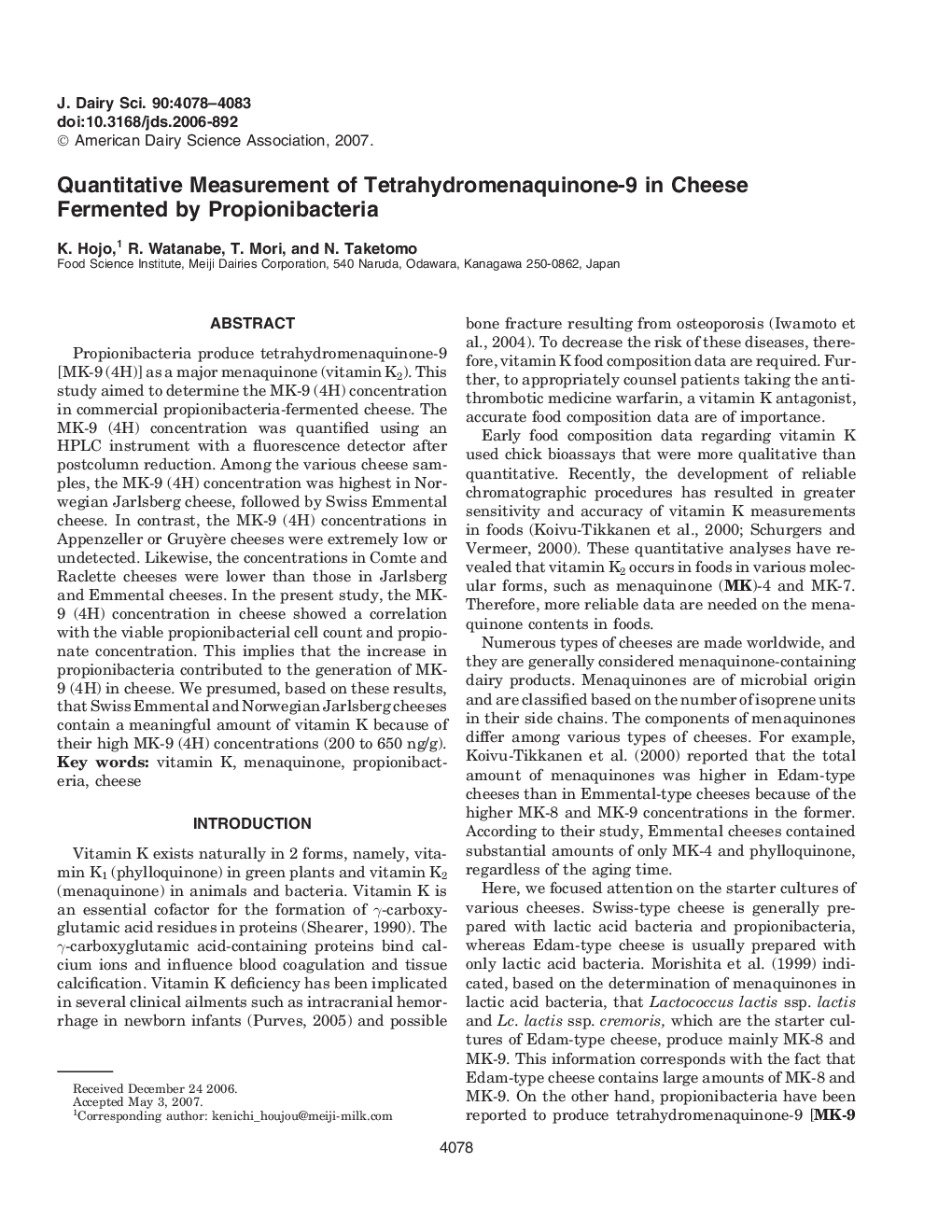| Article ID | Journal | Published Year | Pages | File Type |
|---|---|---|---|---|
| 2440606 | Journal of Dairy Science | 2007 | 6 Pages |
Abstract
Propionibacteria produce tetrahydromenaquinone-9 [MK-9 (4H)] as a major menaquinone (vitamin K2). This study aimed to determine the MK-9 (4H) concentration in commercial propionibacteria-fermented cheese. The MK-9 (4H) concentration was quantified using an HPLC instrument with a fluorescence detector after postcolumn reduction. Among the various cheese samples, the MK-9 (4H) concentration was highest in Norwegian Jarlsberg cheese, followed by Swiss Emmental cheese. In contrast, the MK-9 (4H) concentrations in Appenzeller or Gruyère cheeses were extremely low or undetected. Likewise, the concentrations in Comte and Raclette cheeses were lower than those in Jarlsberg and Emmental cheeses. In the present study, the MK- 9 (4H) concentration in cheese showed a correlation with the viable propionibacterial cell count and propionate concentration. This implies that the increase in propionibacteria contributed to the generation of MK-9 (4H) in cheese. We presumed, based on these results, that Swiss Emmental and Norwegian Jarlsberg cheeses contain a meaningful amount of vitamin K because of their high MK-9 (4H) concentrations (200 to 650 ng/g).
Related Topics
Life Sciences
Agricultural and Biological Sciences
Animal Science and Zoology
Authors
K. Hojo, R. Watanabe, T. Mori, N. Taketomo,
